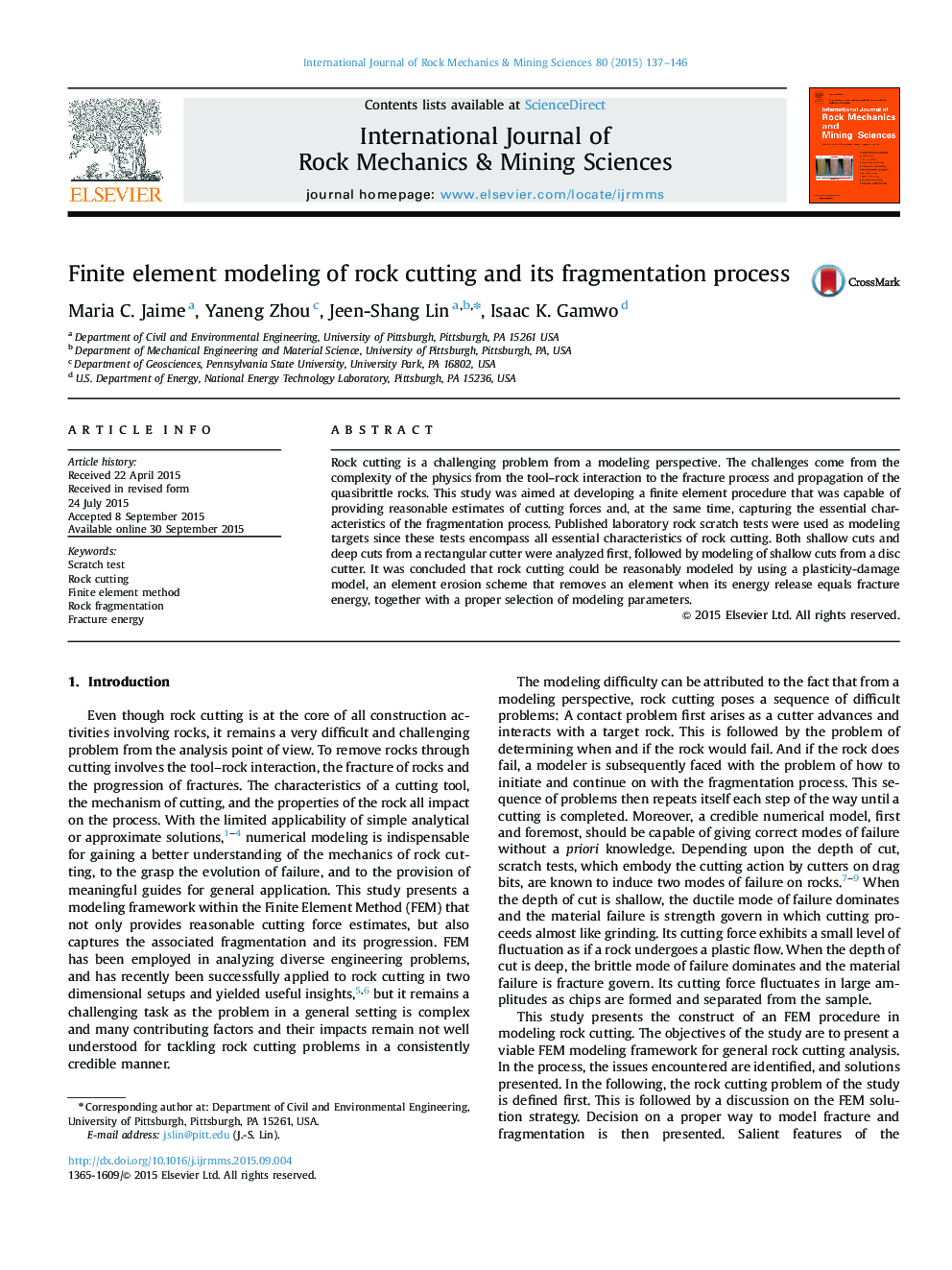| Article ID | Journal | Published Year | Pages | File Type |
|---|---|---|---|---|
| 809025 | International Journal of Rock Mechanics and Mining Sciences | 2015 | 10 Pages |
•A finite element procedure for rock cutting and its calibration are presented through modeling of the scratch tests.•The approach employed a plasticity model and an element erosion scheme that remove an element when its energy release equals fracture energy.•Both the shallow ductile mode and deep brittle mode of failure were captured without a priori assumptions on failure modes.•Both rectangular and disc cutters were modeled successfully.
Rock cutting is a challenging problem from a modeling perspective. The challenges come from the complexity of the physics from the tool–rock interaction to the fracture process and propagation of the quasibrittle rocks. This study was aimed at developing a finite element procedure that was capable of providing reasonable estimates of cutting forces and, at the same time, capturing the essential characteristics of the fragmentation process. Published laboratory rock scratch tests were used as modeling targets since these tests encompass all essential characteristics of rock cutting. Both shallow cuts and deep cuts from a rectangular cutter were analyzed first, followed by modeling of shallow cuts from a disc cutter. It was concluded that rock cutting could be reasonably modeled by using a plasticity-damage model, an element erosion scheme that removes an element when its energy release equals fracture energy, together with a proper selection of modeling parameters.
